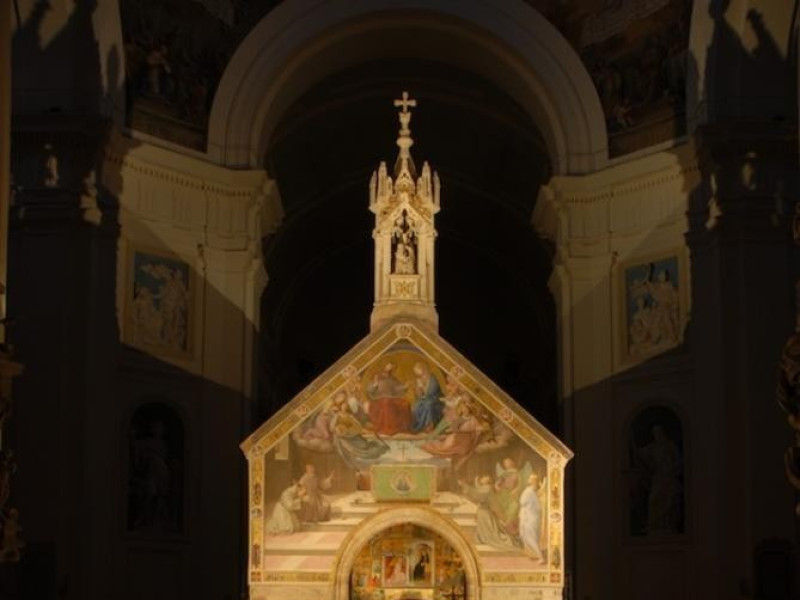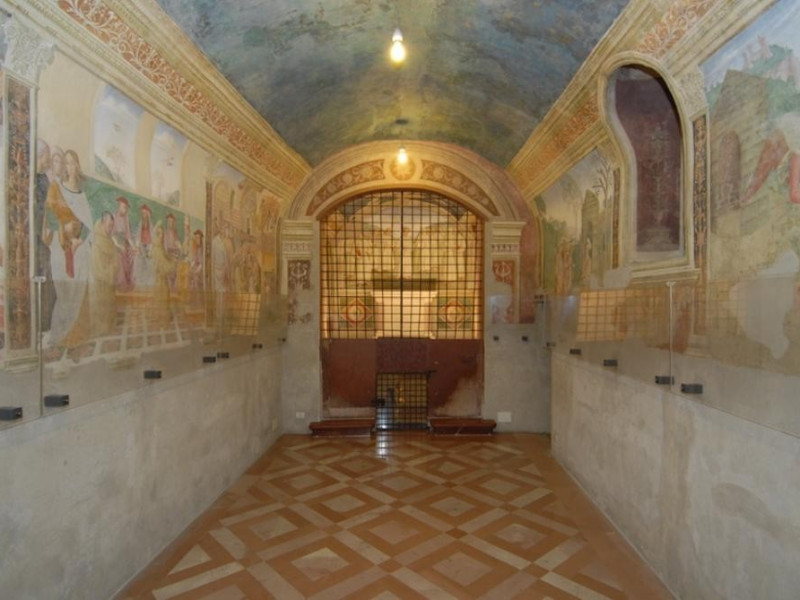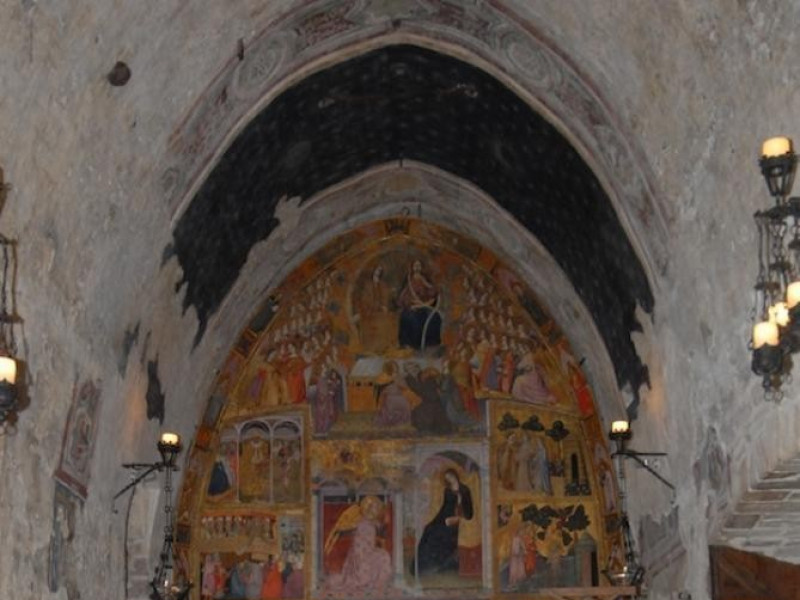Basilica di Santa Maria degli Angeli (Sito UNESCO)
Basilica of Santa Maria degli Angeli The Basilica di Santa Maria degli Angeli was built between 1569 and 1679, its walls enclose the Franciscan Convent structure built behind the Porziuncola—in Latin Portiuncula. Pope Pius V, at the end of the Council of Trent, commissioned the construction of the Basilica, both for the recognition of the importance assumed by the Franciscan minor order and to host the pilgrims that then, and still now, continue to flock there for the occasion of the Indulgence and Pardon—31st July-2 August—desired by St Francis himself. The church was completed in 1679 with the construction of the right side tower bell. It has three naves and was designed by the architect Galeazzo Alessi; the building of the church saw the participation of Giacomo Martelli, Giacomo Giorgetti and probably the Vignola. Due to the collapses, caused by the 1832 earthquake, the basilica was in part rebuilt, preserving the same forms, by Luigi Poletti (1836-40). The façade was built in 1925-30. In the same 1930, the Madonna degli Angeli statue, realized by the sculptor Colasanti, was collocated on its top, whereas for the intervention on the recent rearrangement of the square to the fore, it was necessary to wait for the design of the architect Nicolosi in 1950. At the interior, the three naves have lateral chapels, whose wall decorations represent the most organic collection of the Umbrian paintings of the late 1500s and early 1600s. Of great artistic interest are the Porziuncola Chapel and the Transit Chapel, but above all they are of religious importance because they are bound up with the life of the Saint. The Porziuncola Chapel, dating back to the 10th-11th centuries, is dedicated to St Mary of the Angels, also known as Santa Maria della Porziuncola. Around 1025, St Francis established his home there and restored its premises; he founded the Franciscan Order there in 1208. The superior part of the façade is decorated by a fresco of Friedrich Overbeck form Lübeck (1829) depicting St Francis imploring Jesus and the Madonna the Granting of the Indulgence and Pardon. On the right side, fragments of some frescoes of Sienese influence are visible, and they date back to the 15th century. Inside, the altarpiece is made of a large panel painted by Ilario da Viterbo depicting The Annunciation and Stories of the Pardon. This chapel, called Cappella del Transito, is the cell of the infirmary where St Francis died on the 3rd of October 1226. The frescoes depicting the Death and Funeral of St Francis painted on the exterior are of the artist Domenico Bruschi (1886). Inside there are frescoes of Giovanni di Pietro, known as lo Spagna. Inside the chapel, there is a niche with a glazed terracotta statue of St Francis of Andrea della Robbia. The access to a corridor leading to the Roseto—the rose garden—and the Chapel of the Roses opens from the sacristy. The gardens are part of a legend in the life of St Francis; they were planted exclusively with roses without thorns. Next to the garden is the Chapel (1518), three rooms are decorated with the frescoes of Tiberio d’Assisi, also author of the frescoes in the Oratorio of San Bonaventura (1506). Along the way toward the exit, a 15th century cloister is visible; this is what remains of the small convent from the times of St Bernardino from Siena (15th century).






